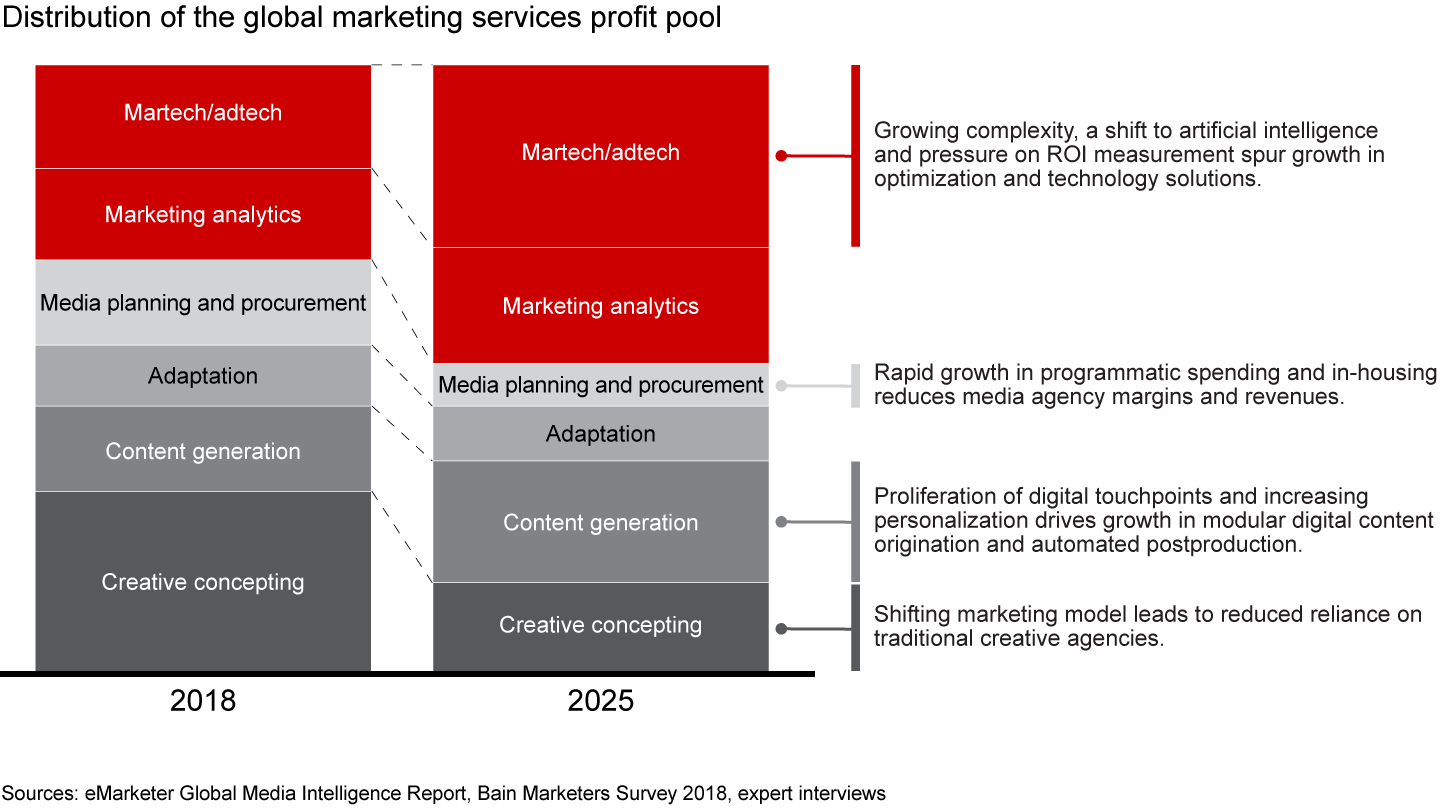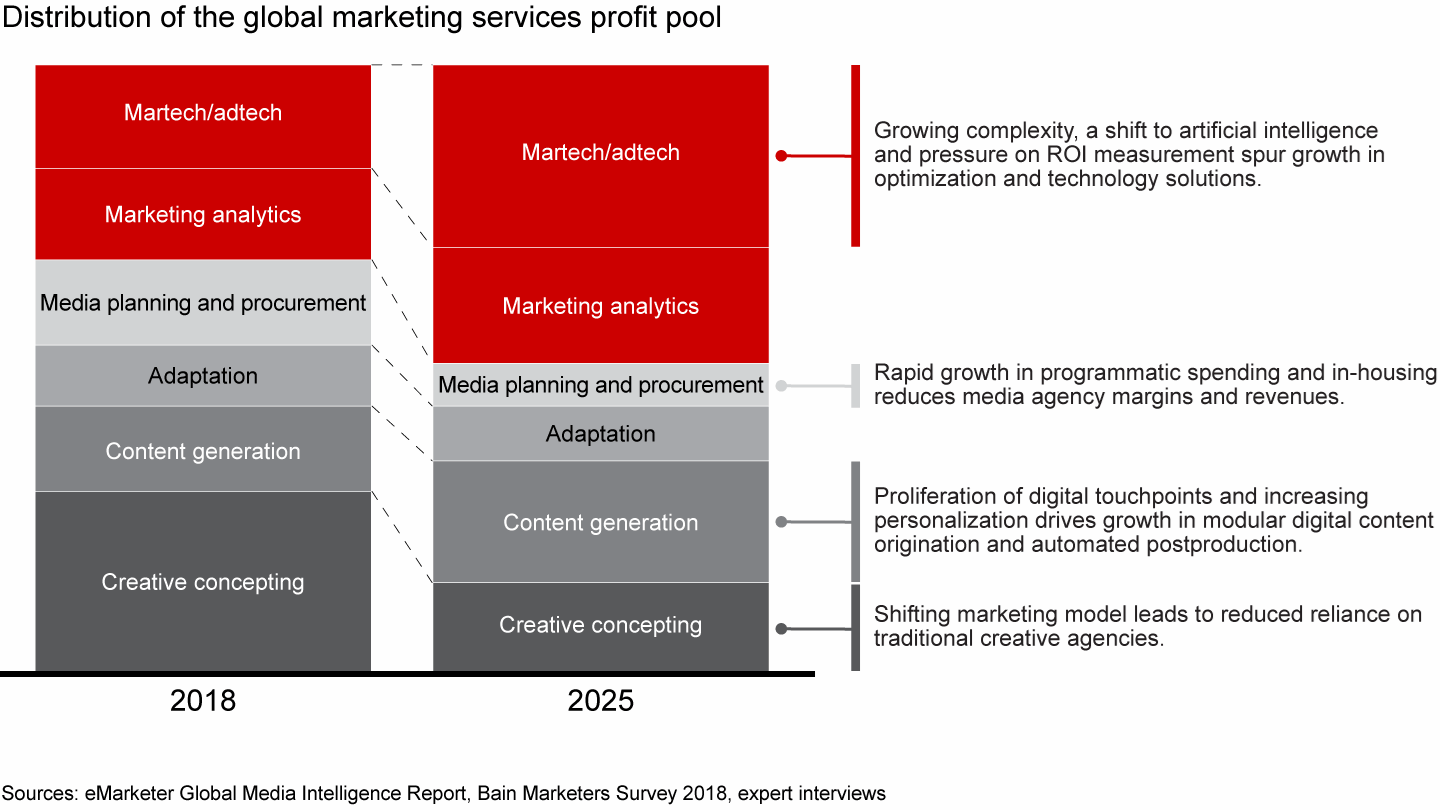論説

概要
- Reinventing the brand growth model requires more than a reallocation of marketing budget to digital.
- CMOs need to reassess growth platforms and future brand portfolios, along with developing a supporting strategy on data and technology.
- By taking the lead on this transformation, CMOs have an opportunity to become stewards of the consumer journey, orchestrating a new brand-building ecosystem.
Not so long ago, marketing consumer products felt like a genteel game of lawn tennis: Established competitors invested in creative with long lead times, using proven models of TV and big-box retail, alongside trusted agency partners. Today, it’s more like a sprawling contest of mixed martial arts, with new competitors playing by different rules; an unprecedented complexity of channels, content and partners; and a step change in speed and ways of working that has punches flying at incumbent consumer products companies.
Fueling the blur of combat is a radical shift in brand growth models. Within the span of most executives’ careers, advances in technology have reshaped how consumers engage with brands. In the US and UK, more than 60% of consumers now discover products online, and 85% of millennials trust reviews from a faceless stranger more than traditional advertising. The same technology advances have dramatically altered the competitive landscape. Reduced barriers to entry in selling and marketing new brands have shortened the shelf life of traditional brands, with 25% of growth going to insurgent competitors, who are redefining consumer expectations of brand purpose, service and engagement. And technology has transformed the tools of the trade: Global spending on digital continues to grow at more than three times the rate of total ad spending, while programmatic spending has grown from 10% to more than 60% of ad spending in the last five years, according to data from eMarketer. The 150 established martech and adtech solutions in 2011 have turned into 7,000 in 2018. We expect more than half of all spending on creative concepting and media planning to shift to content generation and technology by 2025 (see Figure 1).


Companies have reacted, of course. Unilever is reshaping its marketing model, and as content moves in-house, established partnerships are breaking. Kraft Heinz has made data-driven marketing and ownership of first-party data a key growth pillar, with the cost per higher-quality impression declining by 40% to date. Adidas has established new learning capabilities globally to refine content, channel and spending choices.
However, the transformation still required across the industry is significant, involving far-reaching changes to consumer products companies’ growth models and the largest buckets of their discretionary spending. And it’s urgent, as consumers and new competitors are moving faster than incumbents can react. Without top-line growth, newfound capabilities for measuring return on investment can quickly turn into a justification for wholesale cost-cutting, which can backfire when it damages critical capabilities and the growth potential of brands.
Bain Partner Clare Gordon explains how companies can respond to the disruptions created by technology in the consumer products market.
None of this comes as a surprise to CMOs. Our recent survey underscores that they are living these challenges day in and day out:
- “We see new businesses disrupting our industry, but we can’t react without damaging our own profit pool, so we wait and see—likely until it’s too late.”
- “We’re in a negative spiral. As growth slows, marketing is easier to cost-cut than supply or R&D, and within marketing spend, the new channels are the easiest to cut.”
- “I think maybe 10% of my brand managers have the capability and experience to make this change.”
- “The incentives with my traditional agency are no longer aligned—do I work with one person I can’t trust or 100 people I can’t manage?”
What’s the right path forward? Reinventing the brand growth model requires more than a reallocation of marketing budget to digital. CMOs need a reassessment of growth platforms and future brand portfolios, a new understanding of the consumer journey, a supporting strategy on data and technology, and a reorganization of their internal operating model and partnerships (see Figure 2). By taking the lead on this transformation, CMOs have an opportunity to become stewards of the new consumer journey, leading the function with the highest ROI of the company and orchestrating a new brand-building ecosystem.


What will it take? CMOs can start with five critical questions:
- What are my “future back” growth platforms 5 to 10 years from now? CMOs can no longer forecast forward their current profit pools only by looking to fill in geographies and nearby product market segments. That process risks ignoring the industry’s disruptive trends, as profit pools shift quickly from products to services to experiences and communities, and as mass products evolve into new segments with accelerating personalization. Growth strategy today requires consumer products companies to look “present forward” and “future back”—to create a faster horse while envisioning the car—in order to define new growth platforms beyond their current products, business model and capabilities.
- How will I build the right brand portfolio for those platforms? The turn of the 21st century was the era of global megabrands. From 2000 to 2010, PepsiCo, P&G and AB InBev, among others, all doubled or tripled the number of billion-dollar global brands in their portfolios. Investors looked for growth—and incumbents delivered. Insurgent brands, and the new consumer expectations they create, have changed the game. CMOs need a way to participate in this new growth and define how they buy, build and manage a more diverse portfolio. Brand portfolio strategy is back.
- How do I deliver best-in-class performance marketing? The consumer journey has fundamentally changed, and so has the role of the brand manager. Once guardians of the brief to agencies, today they must lead hands-on content generation, data management, and real-time test-and-learn efforts to redefine the “who, where, what, when” of marketing at a much greater speed. The change management challenge is profound, requiring a strategic reallocation of spending and a reorganization of the operating model, while at the same time driving immediate results with improved in-market execution. One global consumer products company used this approach to increase online sales 15% above plan in-year in a major market, while designing the operating model and transition plan to expand its shopper-led digital marketing capabilities globally. Another leading global brand built the overall test-for-results capability to implement match-market A/B/C testing of media mix, visuals, activation, and timing across online and offline sales, resulting in 15% ROI acceleration across the business in-year.
- What is our data and technology strategy and roadmap? None of this can be achieved without the right data and technology roadmap. Our survey of more than 500 CMOs showed that the marketing leaders own their digital destiny and are 1.6 times more likely than the laggards to understand systems and make the integration of tech platforms a top priority. They test for results and test again, with a higher likelihood of refreshing data weekly (1.7 times more likely) and using data to inform decisions (1.4 times more likely). And they are almost 2 times more likely to manage advertising and marketing tech within their marketing teams, enabling them to take control and make fast decisions.
- What operating model do we need to recapture the benefits of scale? The transformation described here requires a new operating model and partnership structure, with an effective process to manage the transition. Leading companies are acting now to:
- Unbundle creative from content agencies to allow for faster, lower-cost content development models, tailored for different brands.
- Upgrade content creation capabilities, boosting the volume of rich assets for lifestyle content and personalized brand messaging through a combination of in-house resources and specific agencies.
- Take control of targeting and consumer data to build differentiated capabilities for retargeting groups of consumers, as well as driving insights and guiding strategy.
- Work with leading-edge SaaS solutions to manage the ecosystem, before investing in building industrial solutions.
- Build agile, cross-functional teams to rapidly test and learn, developing innovation capabilities in new areas.
This is a pivotal moment for CMOs. Their ability to find the right combination of strategy and execution will not only redefine their roles, but also determine the growth and success of the brands under their stewardship.
Clare Gordon is a partner in Bain & Company’s London office and a leader in the firm’s Consumer Products practice. Nicolas Willemot is a partner in Bain’s Brussels office and a leader in the Consumer Products and Customer Strategy & Marketing practices. Eileen Shy is a partner in Bain’s New York office and a leader in the firm’s Consumer Products and Social & Public Sector practices. John Grudnowski is the founder of FRWD and an expert vice president with Bain, based in Minneapolis. He is a leader in the firm’s Digital and Customer Strategy & Marketing practices, with deep digital marketing expertise.

